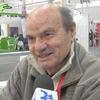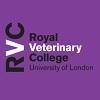Explore all the information on
Porcine Reproductive & Respiratory Syndrome (PRRS)
Porcine reproductive and respiratory syndrome (PRRS) was first reported in the USA in 1987. Since then, outbreaks of PRRS and successful isolation of the virus have been confirmed throughout North America, Asia, South America, Africa, and Europe.
The etiologic agent of porcine reproductive and respiratory syndrome is a virus in the group Arteriviridae. The virus is enveloped and ranges in size from 45 to 80 mm. Inactivation is possible after treatment with ether or chloroform; however, the virus is very stable under freezing conditions, retaining its infectivity for 4 months at -70°C (-94°F). As the temperature rises, infectivity is reduced (15–20 minutes at 56°C [132.8°F]).
After infection of a naive herd, exposure of all members of the breeding population is inconsistent, leading to development of naive, exposed, and persistently infected subpopulations of sows. This situation is exacerbated over time through the addition of improperly acclimated replacement gilts and leads to shedding of the virus from carrier animals to those that have not been previously exposed.
The primary vector for transmission of the virus is the infected pig and contaminated semen. Controlled studies have indicated that infected swine may be long-term carriers, with adults able to shed PRRS virus for up to 86 days after infection, and weaned pigs able to harbor virus for 157 days. Experimentally infected boars can shed virus in the semen up to 93 days after infection.
Introduction: Porcine reproductive and respiratory syndrome virus (PRRSV) is primary pathogen of pigs causing serious failure in production and reproduction of pigs. We confirm the influence of the infection and the vaccination to the immune response in the experiment in vivo. The immunosuppressive activity of this virus can also predispose to secondary bacterial infections. The animals infected with both pathogens develop more severe clinical signs. Materials and...
Comments : 0
Recommendations: 0
Introduction: The objective of this study was to evaluate the onset of immunity of PrimePac PRRS, a modified live PRRSv Type II vaccine, in piglets vaccinated intramuscularly (IM) or intradermally (ID) with IDAL, followed by challenge with PRRS Type II strain VR2332 4 weeks later. Materials and Methods: Two-week old piglets were vaccinated with one dose PrimePac PRRS vaccine (produced by MSD-AH, The Netherlands) dissolved in Diluvac Forte. Vaccinations were...
Comments : 0
Recommendations: 0


Bioavailability of valine in a fermentation biomass product relative to the bioavailability in crystalline L-valine when fed to weanling pigs
Suggested link
Introduction: PRRS is one of the most economically important viral diseases in swine industry. The genome of the causative virus encodes seven structural proteins, namely, GP2a, GP2b, GP3, GP4, GP5, M and N. Although the antibody response against N protein after the infection has been well investigated using an available kit, the antibody response against other structural proteins is yet to be evaluated. Here, except for GP2b, we evaluated by an immunofluorescence...
Comments : 0
Recommendations: 0
Introduction: The FAO (1999) estimates that at least 25 % of world grain and seed production is contaminated by fungi and their mycotoxins, and are considered as one of the greatest risks that affect human and animal health. The fumonisins have been associated with certain diseases in animals such as the leucoencefalomalacia in equines (ELEM) and pig lung edema (PLE). The porcine reproductive and respiratory syndrome (vPRRS) has economically impacted the national and...
Comments : 0
Recommendations: 0


Antibacterial activity of Bacillus species-derived surfactin on Brachyspira hyodysenteriae and Clostridium perfringens (Extract)
Suggested link
Introduction: Porcine reproductive and respiratory syndrome (PRRS) and porcine epidemic diarrhea (PED) viruses are airborne pathogens able to spread rapidly regionally. Despite this evidence, the information on the size of particles with which airborne viruses are associated while airborne in the field is limited. This association will determine the virus contribution to the airborne route, will help to explain the in between-farm transmission, as well as the...
Comments : 0
Recommendations: 0
Introduction: PRRSV leads to huge economic losses for the swine industry worldwide. Availability of simple, easy-to-use and accurate collection methods and laboratory tests are crucial for efficient PRRS diagnosis and monitoring. Blood sampling is currently the most frequently used method in the field for these purposes. A welfare friendly collection method, namely oral fluid (OF), has recently gained interest in the field as an alternative technique to blood sample....
Comments : 0
Recommendations: 0
Introduction: To offer routine diagnostic analyses that are cheaper and less time-consuming than our current in-house ELISAs, we have developed and evaluated a Luminex-based multiplexed immunoassay that facilitates simultaneous detection and distinction between antibodies to porcine reproductive and respiratory syndrome virus (PRRSV) Type 1 and Type 2, Actinobacillus pleuropneumoniae (App) serovars 2, 6 and 12 as well as Salmonella Typhimurium and Salmonella...
Comments : 0
Recommendations: 0
Introduction: PRRS is one of the most significant pig diseases in the modern swine industry. Current vaccination strategies are based on the use of Modified Live Vaccines (MLV) and/or Inactivated Vaccines. Nevertheless, in many farms PRRSV circulation in weaned piglets remains a clinical problem. The objective of this study was to evaluate the effect of implementation of a Dual Technology Prime Boost (DTPB) vaccination combining MLV and PROGRESSIS® (Merial) at the...
Comments : 0
Recommendations: 0
Introduction: The acquisition of replacement gilts represents the main risk for the introduction of the disease to negative farms, or in this case, for the introduction of new virus variants to positive farms. The possibility of boars transmitting PRRS is important even when the animal does not show signs of the disease after infection. Objective: To determine the health status of replacement gilts and boars used for natural mating or semen donors regarding...
Comments : 0
Recommendations: 0
Introduction: This project is to first in Alberta and western Canada to eradicate PRRS from 3 adjoining counties with endemic PRRS infection problems from small continuous flow farms as well as multisite operations, and pursue the understanding of the economics of before and after PRRS positive status. We initially established that 13 of 25 sites were PRRS positive. We have now successfully eradicated PRRS in all of participating locations. Materials and...
Comments : 0
Recommendations: 0
Introduction: In 2014 in North Carolina, anecdotal reports of a particularly virulent PRRSV isolate (RFLP cut pattern 1-7-4) were reported by practicing veterinarians. Reports indicated that the isolate was more transmissible, had higher levels of viremia for longer time periods and was more virulent in comparison to other circulating PRRSV strains. The objective of this study was to evaluate PRRS 1-7-4 isolates under experimental challenge conditions. Materials and...
Comments : 0
Recommendations: 0
Introduction: Respiratory infections remain a significant problem for the swine industry and result in substantial economic loss. Swine Respiratory Disease (SRD) is a complex condition involving viral agents and bacterial agents such as Actinobacillus pleuropneumoniae ( App ), Haemophilus parasuis ( Hp ), Bordetella bronchiseptica ( Bb ) and Pasteurella multocida ( Pm ). The in vitro activity of...
Comments : 0
Recommendations: 0


Bioavailability of valine in a fermentation biomass product relative to the bioavailability in crystalline L-valine when fed to weanling pigs
Suggested link
Introduction: Gamithromycin, the active pharmaceutical ingredient in Zactran® 15% w/v gamithromycin injection from Merial, is a novel azalide antimicrobial developed for the treatment of swine respiratory disease. Gamithromycin is a 15-membered semi-synthetic macrolide with a uniquely positioned alkylated nitrogen at the 7a-position of the lactone ring. The PK properties and dose proportionality of gamithromycin in swine plasma were determined after a single...
Comments : 0
Recommendations: 0
Introduction: Porcine Reproductive and Respiratory Syndrome virus (PRRSv) has been reported to negatively modulate pig immune response, particularly the inhibition of interferon-g (IFN-g) and increasing the number of interleukin10 (IL-10) producing cells. Thus, one of the strategies in controlling the immune-modulation of PRRSv is to use immuno-enhancer for PRRS immune response. Sangrovit Extra ®, a plant extract from Macleaya cordata, mainly consists of isoquinoline...
Comments : 0
Recommendations: 0


Antibacterial activity of Bacillus species-derived surfactin on Brachyspira hyodysenteriae and Clostridium perfringens (Extract)
Suggested link
Introduction: The farm was a closed herd using AI and comprised 430 breeding sows. Progeny were kept until 10 weeks of age when they were sent to a second unit for finishing. The farm was infected with PRRS virus, as well as enzootic pneumonia (EP) (Mycoplasma hyopneumoniae), pleuropneumonia (Actinobacillus pleuropneumoniae) (APP) and streptococcal meningitis/arthritis (SM) (Streptococcus suis). The farm was planning to replace the weaning...
Comments : 0
Recommendations: 0
Over the last 30 years, diseases caused by emerging swine viruses (ESV) have acquired great relevance, more than in other species. Diseases caused by porcine reproductive and respiratory syndrome virus (PRRSv), high pathogenicity porcine epidemic diarrhea virus (PEDv), porcine circovirus type 2 (PCV-2), and influenza virus H1N1pdm09 had great economic impact. Others, however, such as porcine enteroviruses, porcine toroviruses (PToV), porcine sapelovirus (PSV), porcine bocavirus (PBoV),...
Comments : 0
Recommendations: 0
Introduction: Porcine reproductive and respiratory syndrome (PRRS) is among the diseases with the highest economic impact in pig production worldwide. Losses due to the disease were estimated as high as 560 Mio. US$ per year in the USA. Yet, the economic impact of the disease at farm level is not well understood as, especially in pig herds chronically infected with PRRS virus, the losses caused are often not obvious for farmers and veterinarians Thus, the aim of this study was...
Comments : 0
Recommendations: 0
Introduction: Swine Respiratory Disease (SRD) is a complex condition involving viral agents and bacterial agents such as A. pleuropneumoniae , H. parasuis and P. multocida . These organisms often act together to increase the severity and duration of the disease, therefore, appropriate control of these pathogens is important for swine health management. The present abstract refers to the field efficacy of ZACTRAN®, Merial in comparison with...
Comments : 0
Recommendations: 0
Johannes Kauffold (University of Leipzig) talked about conception rate and the way to use data to understand what happens on the farm, during IPVS2022 in Rio de Janeiro, Brazil....
Comments : 0
Recommendations: 0
















